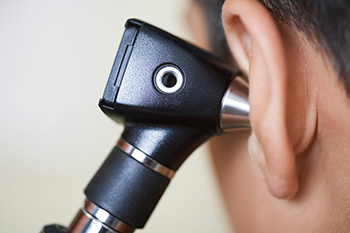 A few weeks ago, we discussed the study of hearing, audiology, and the importance of hearing health. We talked about being cognizant of some of the symptoms of auditory problems and what to look for – both in yourself and in others.
A few weeks ago, we discussed the study of hearing, audiology, and the importance of hearing health. We talked about being cognizant of some of the symptoms of auditory problems and what to look for – both in yourself and in others.
This week’s blog will discuss solutions for hearing loss, primarily the types of hearing aids that may be available to you and how your Melbourne, FL ENT doctor can assist you with finding the right solution. Once the severity of the patient’s hearing loss has been identified, hearing aids may be recommended based upon the type of loss, personal daily living, and patient expectations.
Hearing aids operate by increasing the sound level so that you can distinguish them. The tiny microphones within the aid process the sound; it is digitally converted, analyzed, and adjusted – based upon the level of hearing loss, ambient noise and patient requirements. The signals are then converted back to analog (sound waves) and to the ear with small speakers.
Hearing aid types include:
Behind-the-ear (BTE)
Hooking up and around, resting behind the ear, the BTE hearing aid consists of an earpiece customized to the patient’s ear canal (ear mold). The hearing aid is connected to this earpiece with a tube.
The BTE hearing aid is suitable for any age and is effective for hearing loss of most any type. It is one of the most popular types of hearing aids.
In-the-ear (ITE)
An ITE or in-the-ear hearing aid may be provided with a full shell (fills most of the outer ear) or a half shell (fills the lower part of the ear.)
This form of hearing aid is for those sufferers with mild to severe hearing loss.
Completely-in-the-canal (CIC) or mini CIC
The visibility of the CIC or mini CIC is smaller, but due to the limited size, the features are more restricted. The CIC will fit inside the ear canal and be almost invisible. Mild to moderate hearing losses can be treated with this device.
Receiver in canal (RIC) or receiver in the ear (RITE)
These devices are comparable to the behind-the-ear hearing aids. A tiny wire, as opposed to tubing, connects the hearing aid to the earpiece.
Open fit
An open fit hearing aid is an adaptation of BTE hearing aids, providing for the natural entry of low frequency sounds into the ear, while high-frequency sounds are modified by the hearing aid.
Naturally, it will take time to adjust to the hearing aid and that your hearing will gradually improve as you become accustomed to the device. With the help of Dr. James Go, you can be well on your way to enhancing your ability to hear and communicate.



